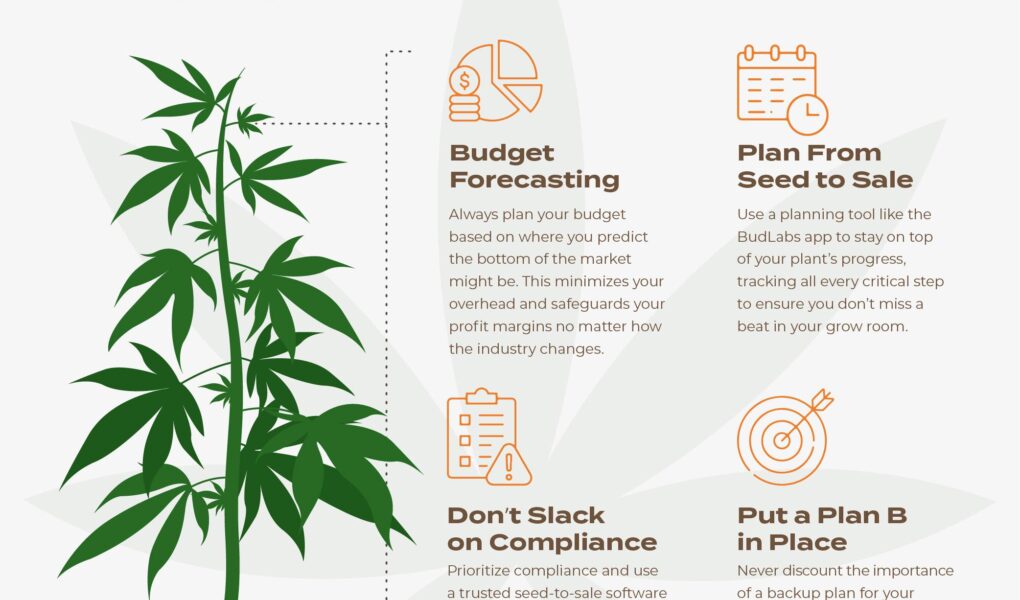Title: Cultivating Green: The Art and Science of Cannabis Growth
As the sun dips below the horizon and casts a warm golden hue across vast green fields, a quiet revolution is unfolding within the world of horticulture. Cannabis, once relegated to the shadows of legality and stigma, has emerged into the spotlight, captivating enthusiasts, farmers, and researchers alike. From the backyard grower to the industrial cultivator, the journey of cannabis growth is a complex interplay of nature, technology, and dedication. This article delves into the intricacies of cultivating this versatile plant, exploring the factors that contribute to its growth, the cultivation methods employed, and the broader implications of cannabis agriculture in our society today. Join us as we navigate the rich tapestry of cannabis growth, where science meets artistry, and opportunity blooms in every leaf.
Table of Contents
- Understanding the Science Behind Cannabis Growth
- Cultivating the Ideal Environment for Maximum Yield
- Nurturing Techniques for Healthy Cannabis Plants
- Common Challenges and Effective Solutions in Cannabis Cultivation
- Q&A
- Closing Remarks
Understanding the Science Behind Cannabis Growth
The intricate process of cannabis growth is governed by various biological and environmental factors that come together to create optimal conditions for healthy plants. At the heart of this growth cycle are essential elements such as nutrients, light, water, and temperature. Each factor plays a pivotal role, influencing both the rate of growth and the quality of the yield. For instance, the right balance of nitrogen, phosphorus, and potassium is crucial for robust vegetative growth, while adequate light exposure, particularly in the spectrum of blue wavelengths during the vegetative stage and red wavelengths during flowering, can significantly boost photosynthesis efficiency.
Moreover, the genetics of the cannabis strain also dramatically affects growth patterns and resilience to environmental stressors. When selecting strains, growers often consider traits such as growth height, flowering time, and cannabinoid profiles. Understanding these factors can aid in making informed choices when cultivating cannabis, especially for maximizing yields. In addition, environmental variables such as humidity levels and CO2 concentrations can enhance plant development and cannabinoid production. A well-regulated environment not only fosters healthy plants but also optimizes for quality, ensuring that the final product is both potent and flavorful.
Cultivating the Ideal Environment for Maximum Yield
Creating a thriving atmosphere for cannabis cultivation is pivotal to achieving optimal yields. The interplay of various environmental factors can significantly influence the health and productivity of your plants. To maximize growth, focus on:
- Light: Ensure your plants receive adequate light intensity and duration, using full-spectrum LED lights or high-intensity discharge lamps.
- Temperature: Maintain a stable temperature range; ideally, between 70°F and 85°F (21°C to 29°C) during the day and slightly cooler at night.
- Humidity: Adjust the humidity levels according to the growth stage, starting at 70-80% for seedlings and lowering it to around 40-50% during flowering.
- Air Circulation: Invest in fans or ventilation systems to prevent stagnant air and promote healthy airflow, reducing the risk of pests and diseases.
Soil quality and nutrient management also play a crucial role in nurturing your cannabis plants. Opt for loamy soil that offers excellent drainage while retaining essential moisture. Integrating organic compost or well-balanced fertilizers can provide the necessary nutrients that promote vigorous growth. Consider using a nutrient schedule that aligns with your plants’ growth phases to enhance their development, focusing on:
| Nutrient Type | Growth Phase |
|---|---|
| Nitrogen | Seedling & Vegetative |
| Phosphorus | Flowering |
| Potassium | Ripening |
Nurturing Techniques for Healthy Cannabis Plants
To cultivate healthy cannabis plants, it’s essential to focus on nutrient management. Plants require a balanced intake of nutrients to thrive. Key nutrients include nitrogen, phosphorus, and potassium, but also trace minerals such as calcium, magnesium, and iron. Ensuring suitable pH levels in the soil or growing medium aids nutrient absorption. Here are a few effective techniques:
- Soil Health: Use organic compost to enrich the soil.
- Fertilization Schedule: Implement a consistent feeding schedule with organic fertilizers.
- Watering Practices: Water early in the day to prevent root rot and maintain moisture without over-saturation.
Another critical aspect of cannabis cultivation is the control of environmental factors. Plants thrive in optimal conditions, making temperature, humidity, and light exposure vital. Maintaining a stable climate ensures robust growth. Here’s an easy reference table for ideal conditions:
| Environmental Factor | Optimal Range |
|---|---|
| Temperature (Day) | 70-85°F (20-30°C) |
| Temperature (Night) | 65-75°F (18-24°C) |
| Humidity (Vegetative Stage) | 40-70% |
| Humidity (Flowering Stage) | 40-50% |
| Light Cycle (Vegetative) | 18/6 hours |
| Light Cycle (Flowering) | 12/12 hours |
Common Challenges and Effective Solutions in Cannabis Cultivation
Cultivating cannabis can be rewarding, yet it comes with its own set of challenges that can hinder growth and yield. Pest control is one of the most prevalent issues, as pests can infiltrate crops, reducing plant health and quality. Growers often face dilemmas with nutrient management, where improper feeding can lead to deficiencies or toxicities that inhibit growth. Furthermore, environmental factors such as humidity, temperature, and light exposure can significantly affect overall plant development. To tackle these challenges, implementing integrated pest management (IPM) can provide a balanced approach to combat pests without harming plants. Additionally, regular soil testing and adjusting nutrient levels accordingly can foster optimal conditions for growth.
Another critical aspect of cannabis cultivation is ensuring proper water management. Overwatering or underwatering can result in root rot or drought stress, both detrimental to plant health. It is essential for growers to regularly monitor plant health indicators and employ techniques such as drip irrigation to maintain consistent moisture levels. To analyze the effectiveness of various cultivation techniques, consider using a checklist for best practices:
| Practice | Importance | Frequency |
|---|---|---|
| Soil Testing | Identify nutrient needs | Every 4-6 weeks |
| Pest Monitoring | Prevent infestations | Weekly |
| Watering Schedule | Maintain optimal moisture | As needed |
By addressing these elements with proactive strategies, growers can navigate the complexities of cannabis cultivation while maximizing their crop’s health and productivity.
Q&A
Q: What are the fundamental elements needed for successful cannabis growth?
A: Just like a symphony relies on various instruments to create harmony, cannabis growth depends on a mix of essential elements: light, water, nutrients, air circulation, and temperature. Each of these elements plays a crucial role in ensuring that your cannabis plants thrive, from seedling to harvest.
Q: How important is the choice of strain when growing cannabis?
A: The choice of strain is akin to choosing the right recipe—some require specific conditions to shine while others are more forgiving. Selecting a strain that suits your growing environment and skill level can significantly influence the ease of cultivation and the quality of the final product.
Q: What are the common growing methods for cannabis?
A: Cannabis growers have a variety of techniques at their disposal, including soil cultivation, hydroponics, and aeroponics. Each method has its pros and cons; soil is cherished for its organic qualities, while hydroponics can speed up growth cycles and enhance yields. It’s all about aligning your method with your goals and resources.
Q: How can novice growers avoid common pitfalls?
A: Almost every grower has a war story involving overwatering or nutrient burn. Starting with a solid plan, doing thorough research, and gradually introducing new elements can help mitigate these issues. Keeping a grow diary can also be invaluable—recording successes and setbacks offers insight for future endeavors.
Q: What role does light play in the growth of cannabis?
A: Light is the lifeblood of cannabis plants. In the vegetative stage, they thrive on longer light cycles, while during flowering, they benefit from a shift to a 12/12 light cycle. Different types of lighting—LED, HPS, or fluorescent—provide various efficiencies and heat outputs, so understanding their impact is key.
Q: How does the environment affect cannabis growth?
A: Cannabis is like a delicate diva; it flourishes in ideal conditions. Factors such as humidity, temperature, and CO2 levels can greatly influence growth rate and bud quality. Understanding how to create a suitable microclimate within your grow space can help cannabis plants reach their full potential.
Q: What are some tips for harvesting cannabis?
A: Harvesting is a critical moment, much like the final act of a play. It requires patience and timing, typically when the trichomes have turned milky with a hint of amber for optimal potency. Proper harvesting techniques, such as using clean tools and handling the buds delicately, will set the stage for a better curing process.
Q: How can growers ensure their cannabis is safely and effectively cured and stored?
A: Curing is the icing on the cake. After harvesting, buds should be placed in airtight containers and stored in a cool, dark place where humidity can be carefully controlled. This process allows for the development of terpenes and cannabinoids, enhancing flavor and potency for a more enjoyable experience.
Q: Is there an ideal time of year to grow cannabis?
A: While outdoor growing is heavily influenced by seasonal changes—typically beginning in spring when temperatures rise—indoor growers have the luxury of cultivating year-round. The choice should align with your growing preferences, goals, and local regulations.
Q: What resources are available for those looking to expand their cannabis cultivation knowledge?
A: Knowledge is power! From online forums and agricultural extension programs to books penned by seasoned growers, there is a wealth of information available. Joining local or online cannabis communities can also provide invaluable support and tips from fellow enthusiasts.
Closing Remarks
As we conclude our journey through the intricate world of cannabis growth, it becomes clear that this multifaceted plant offers more than just potential recreational benefits. From the delicate dance of genetics and environmental factors to the nurturing hands of cultivators, each stage of growth tells a story of patience, science, and art. Whether you are a seasoned grower or simply a curious observer, understanding the nuances of cannabis cultivation opens the door to a deeper appreciation for this remarkable organism.
As the conversation around cannabis continues to evolve, so too does our understanding of its role in society—from a symbol of rebellion to a potential powerhouse in health, wellness, and industry. The future of cannabis growth promises innovation, sustainability, and, perhaps, even a greater connection to the earth itself.
Ultimately, cultivating cannabis is not just about growing a plant; it’s about fostering a relationship with nature, exploring the science that underpins its development, and embracing the myriad ways it can enrich our lives. As we move forward, let us remain open to the endless possibilities that lie within each seed, each leaf, and each bud. In every cultivation endeavor, there lies a promise—a promise of discovery, growth, and the profound bond between humanity and the green world that surrounds us.


